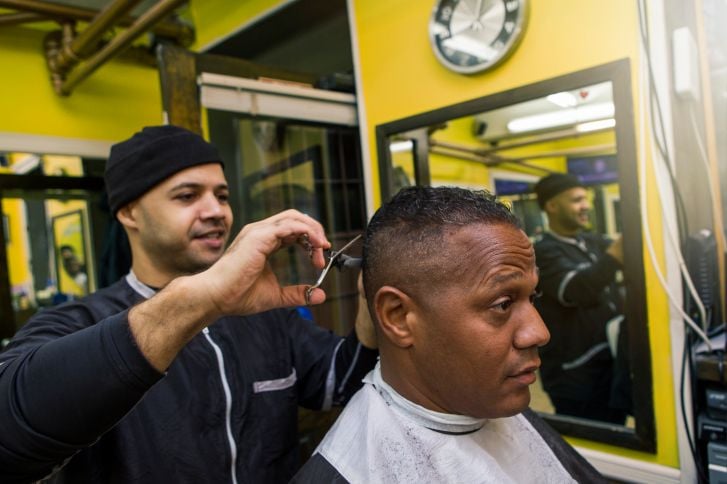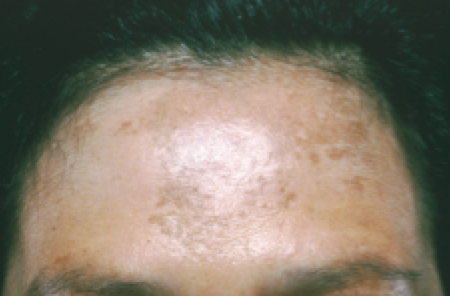- Created in Skin cancer
Skin cancer is colorblind -- no 'free pass'

People of all colors, including those with brown and black skin, get skin cancer. Even if you never sunburn, you can get skin cancer.
When skin cancer develops in people of color, it’s often in a late stage when diagnosed. This can be deadly when the person has melanoma, a type of skin cancer that can spread quickly. Treatment for any type of skin cancer can be difficult in the late stages.
The good news is you can find skin cancer early. Found early, most skin cancers, including melanoma, can be cured.
There’s also a lot you can do to reduce your risk of getting skin cancer.

How people of color can find skin cancer
Because skin cancer begins on the skin, this cancer can be found early. The best way to find skin cancer is to check your own skin.
Here’s what dermatologists recommend for people who have skin of color:
| What you can do | Skin self-exam: This is a full body exam of your skin |
| What you need | A full-length mirror and a partner or handheld mirror |
| When | Monthly |
| What to look for | People who have skin of color want to look for the following:
|
| How to check your skin |
|
| Where to look closely |
|
| What to do if you find something | See a dermatologist. You can find a dermatologist near you by using Find a Dermatologist. |
| Why this is important | Performed monthly, you can find changes to the spots on your skin, which could be skin cancer. When treated early, treatment often cures skin cancer. In the later stages, skin cancer can turn deadly and treatment can be difficult. |
Pictures of skin cancer in people of color
The following pictures show some examples of what skin cancer can look like in people of color.

 | ||
| Photo courtesy of Calvin O. McCall, MD, FAAD | Photo courtesy of Calvin O. McCall, MD, FAAD | |

How people of color can reduce their skin cancer risk
Dermatologists in the United States tell their patients with skin of color to reduce their risk of getting skin cancer by doing the following:
- Seek shade whenever possible. The sun causes many skin cancers. Avoid the sun between 10 am and 4 pm these times cause ultraviolet rays are the strongest.
- Wear clothing that protects your skin from the sun. A wide-brimmed hat can shade your face and neck. You also want to wear shoes that cover the entire foot. African Americans often develop skin cancer on their feet.
- Wear sunscreen. Yes, people of color should wear sunscreen. Dermatologists recommend that people of color use sunscreen that has:
- Broad-spectrum protection
- SPF 30 or greater
- Water resistance
- Apply sunscreen to dry skin 15 to 30 minutes before going outdoors. You want to apply sunscreen to skin that will be bare. Be sure to apply sunscreen every day — even on cloudy days.
- When outdoors, reapply sunscreen. You want to reapply:
- Every 2 hours
- After sweating or getting out of the water
- Never use tanning beds or sunlamps. These emit harmful UV rays, which can cause skin cancer.
- Keep children under three months out of direct sunlight. When exposure cannot be avoided, use a broad spectrum sunscreen and sun protective clothing to protect exposed parts

Make a difference: Start checking your skin today
People of color have a lower risk than whites of getting skin cancer. But they still have a risk. Monthly skin self-exams can help you find skin cancer early when a cure is likely.
Images
Images 1: Thinkstock
Images 3 – 11 used with permission of Journal of the American Academy of Dermatology:
- Images 3, 4, 9, 10, and 11: J Am Acad Dermatol. 2014;70(4):748-62. • Images 5, 6, 7, and 8: J Am Acad Dermatol. 2006;55(5):741-60.
- Image 12: Image used with permission of the American Academy of Dermatology National Library of Dermatologic Teaching Slides.
References
Agbai ON, MD, Buster K, et al. “Skin cancer and photoprotection in people of color: A review and recommendations for physicians and the public.” J Am Acad Dermatol 2014;70(4):748-62.
American Academy of Dermatology. “Dermatologists provide recommendations for preventing and detecting skin cancer in people of color.” News release issued February 4, 2014.
Gloster HM and Neal K. “Skin cancer in skin of color.” J Am Acad Dermatol 2006;55(5):741-60.
© 2019 American Academy of Dermatology. All rights reserved. Reproduction or republication strictly prohibited without prior written permission. Use of these materials is subject to the legal notice and terms of use located at https://www.aad.org/about/legal
